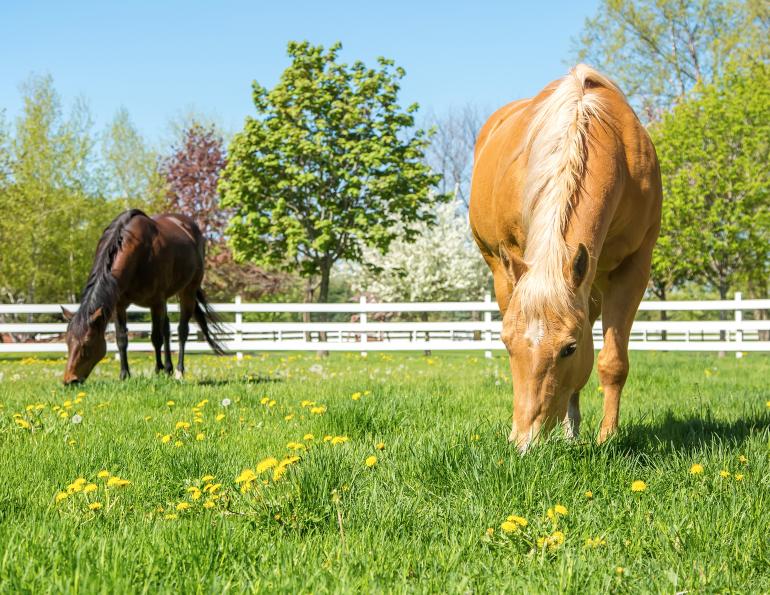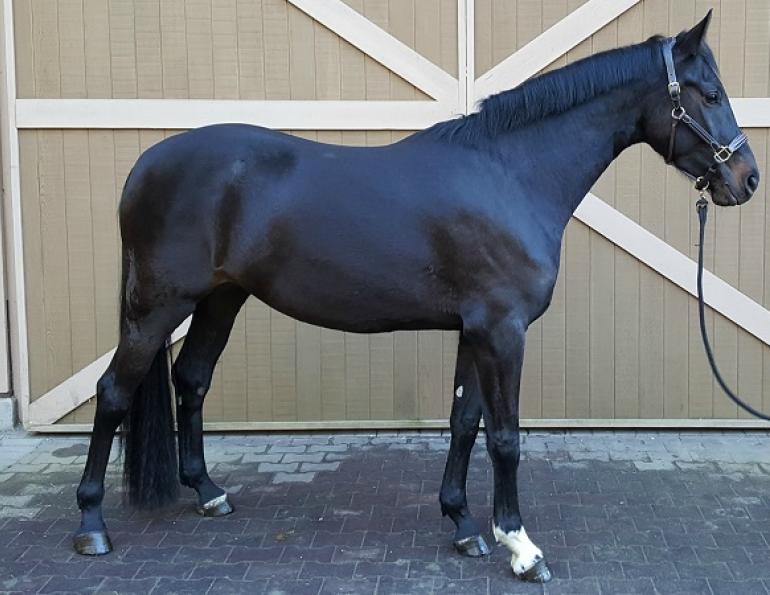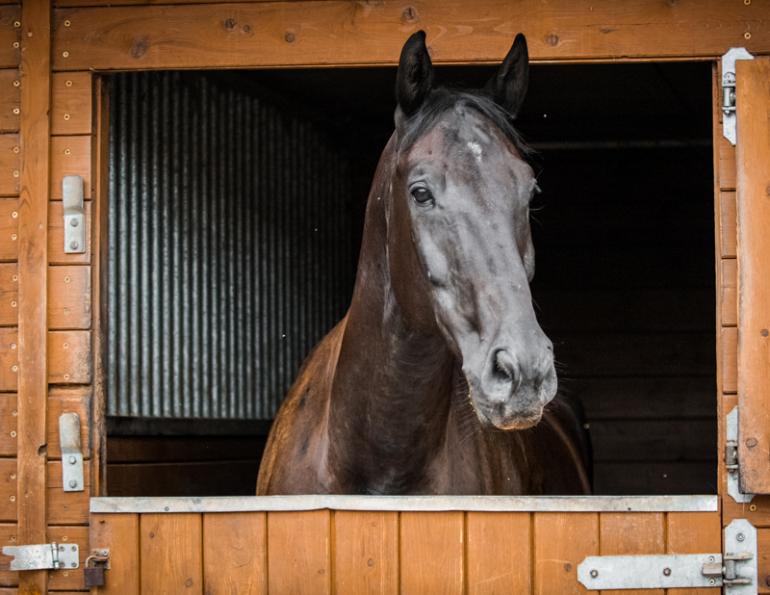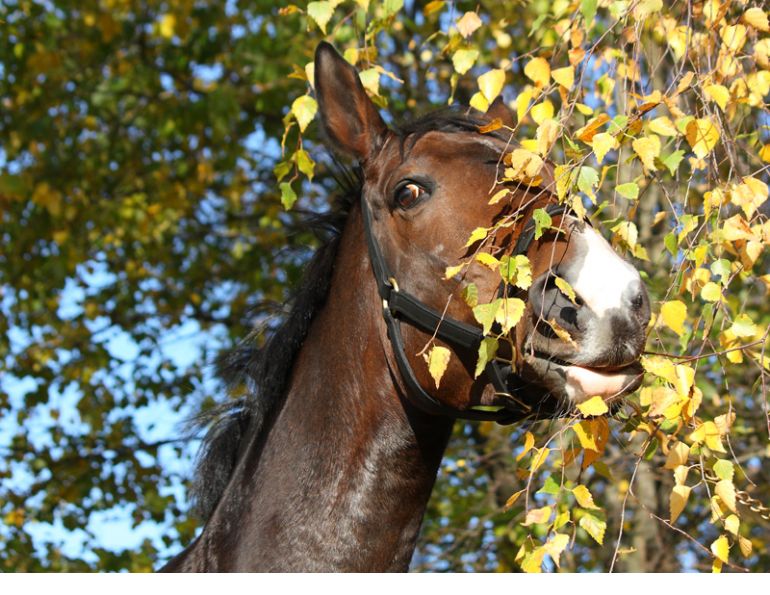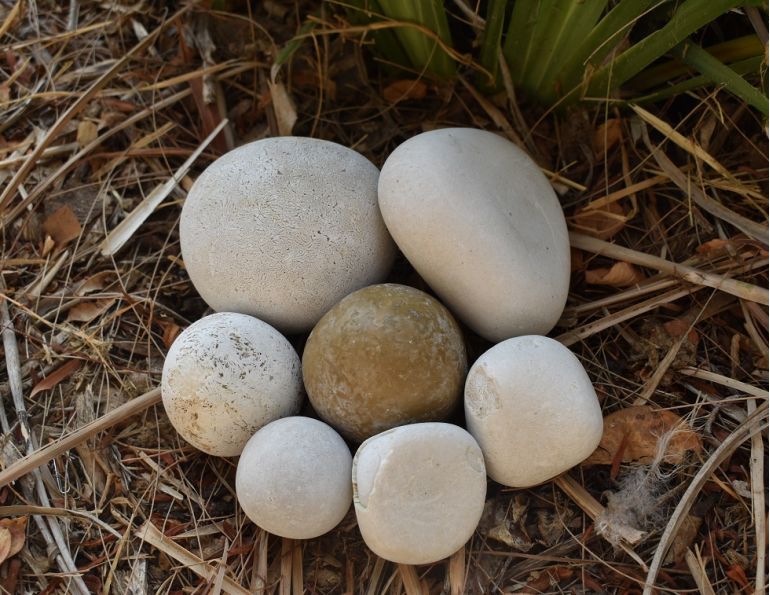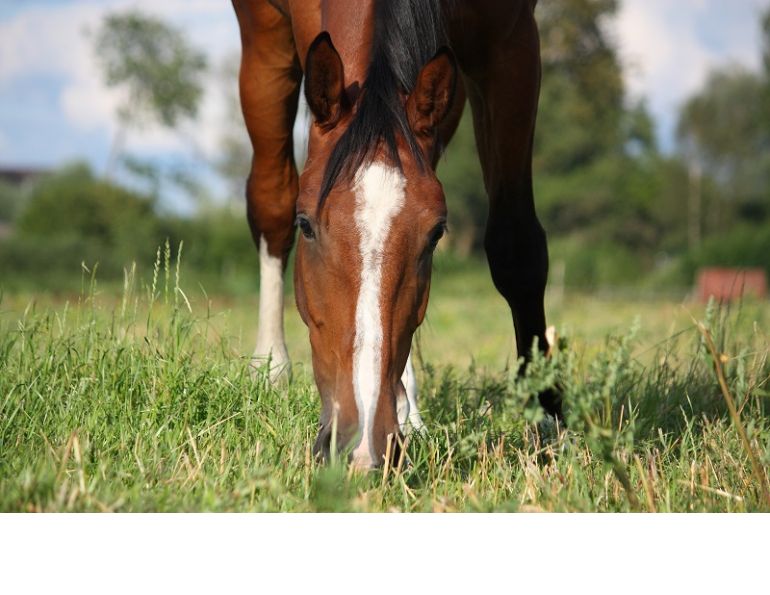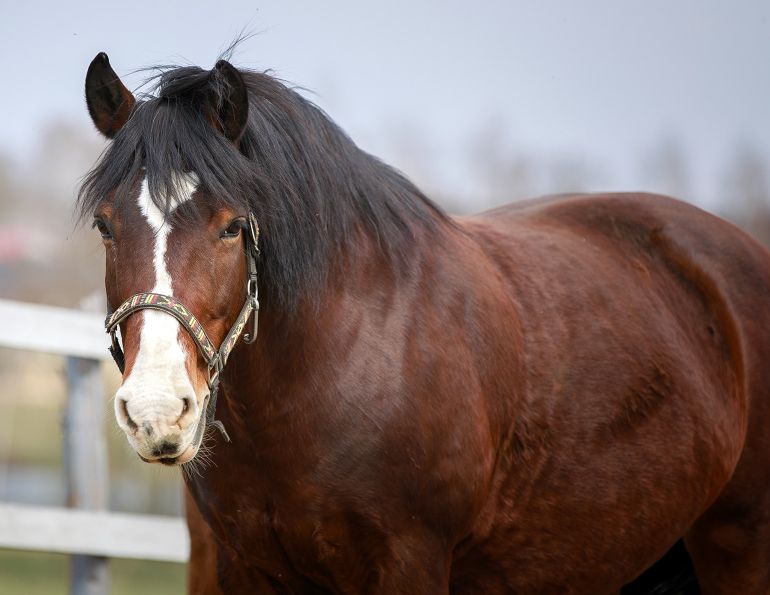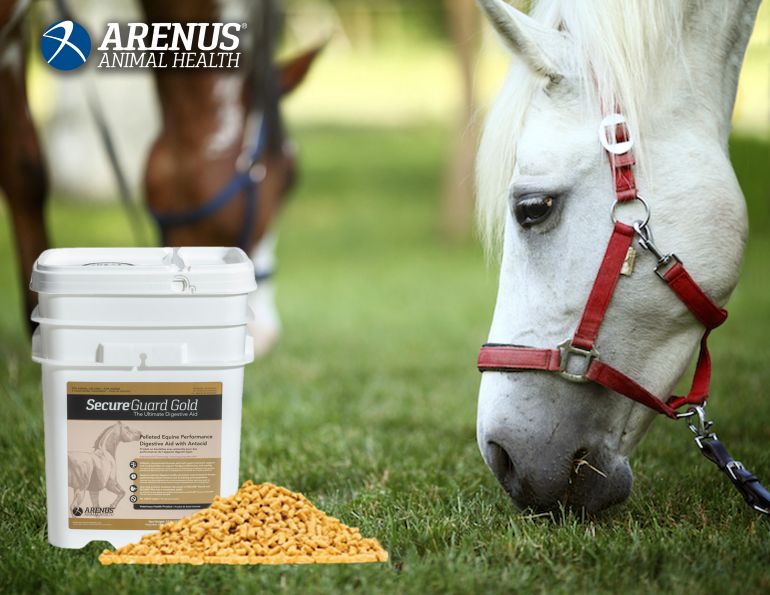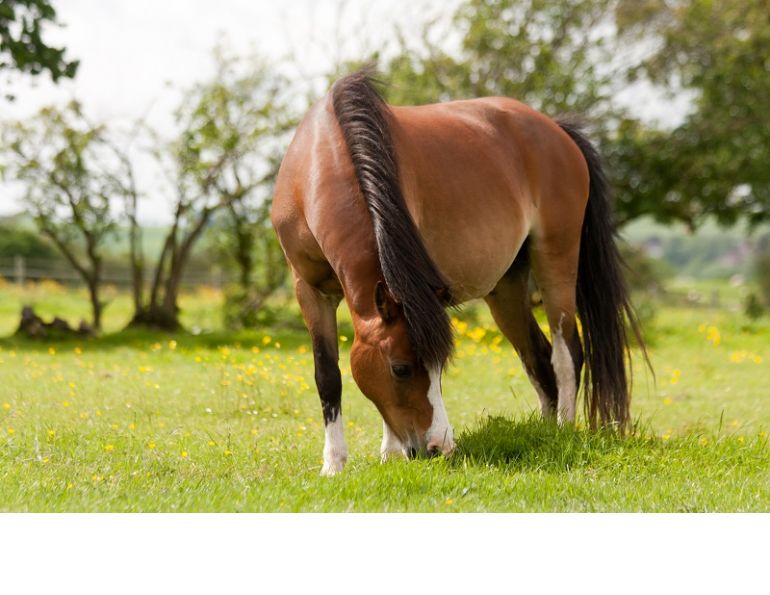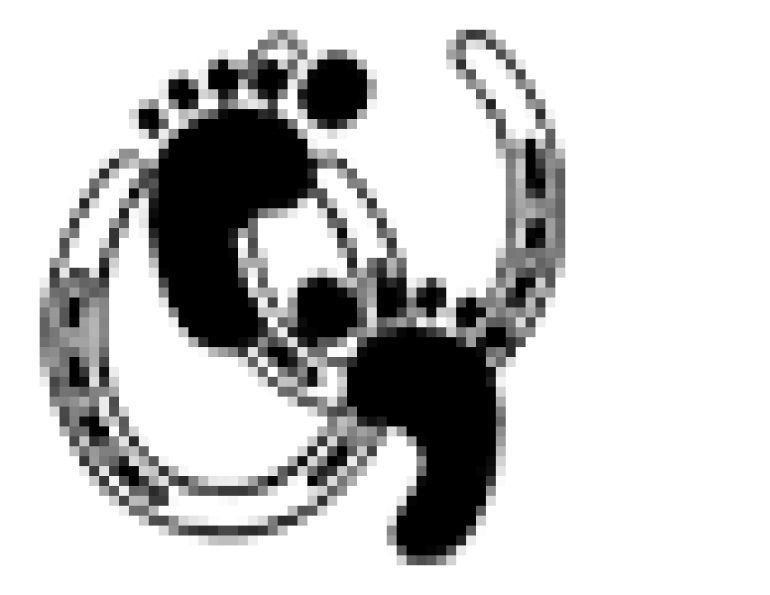By Shelagh Niblock, PAS
Vitamin E is a fat soluble vitamin that is an essential nutrient in equine diets. Vitamin E functions largely as a biological antioxidant in the equine body, protecting tissues from the oxidative effects of free radicals. Free radicals are a natural outcome of cell metabolism but they can become excessive during conditions of hard work or injury.
The more active the cells are in your horse, the more at risk he is of oxidative stress at the cellular level. This means that hard-working performance horses and growing horses are at particular risk of oxidative stress. Vitamin E also functions to enhance immunity at the intracellular level in our horses.
Horses do not manufacture vitamin E in their own bodies and therefore need supplemental sources of it. Dietary sources include fresh forages such as pasture, whole grains with the endosperm intact, as well as fats and oil seeds. Horses that are deficient in vitamin E will have poor immunity and longer recovery times after injury or work due to oxidative stress on the cells within the body. Other nutritional antioxidant sources include carotenoids like beta carotene, as well as vitamin C and selenium.
What are the sources of vitamin E in the equine diet?
Vitamin E is a naturally occurring organic compound called alpha-tocopherol. Equine diets can contain either synthetic vitamin E (dl-alpha-tocopherol), or natural vitamin E (d-alpha-tocopherol), or both. Research in multiple species including humans has shown that the natural form of vitamin E is better utilized by the body and is more effective at raising blood serum or plasma vitamin E levels.
Vitamin E in either the natural or synthetic form is very unstable and subject to deterioration, so a form that has been esterified is generally added to any manufactured feeds or supplements. A common esterified form is called alpha-tocopheryl acetate. Esterified vitamin E sources are completely safe and effective, and are rapidly converted back to non-esterified vitamin E in the digestive tract.
Over-the-counter natural vitamin E supplements or capsules intended for human consumption may say “natural source” or “organic” vitamin E, but a review of the ingredient statement will show the non-esterified d-alpha-tocopherol. This can be confusing but it is worthwhile familiarizing yourself with the terminology so you can be sure of what you are buying for yourself or your horse. Sources of vitamin E intended for human consumption work well for horses and can sometimes be more economical.
The most metabolically available source of vitamin E for horses is one where vitamin E is processed to make it water soluble. There are a couple of sources of processed vitamin E, including Nano-E by Kentucky Equine Research and Elevate WS by Kentucky Performance Products, which are distributed within Canada and the US. Check with your favourite tack and supply store to see if they supply these products.
Fresh spring pasture is one of the most abundant sources of vitamin E, but stored forages like hay or haylage lose their vitamin E activity quickly. Whole grains and some unsaturated fat sources are also good sources of the vitamin but again, the vitamin deteriorates rapidly during storage.
Related: Feeding Horses with Special Nutritional Needs
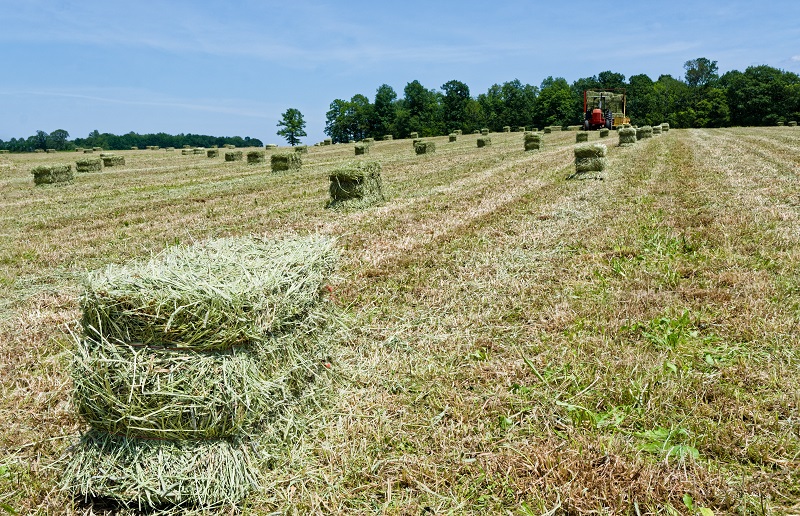
Stored forages have reasonable levels of vitamin E when harvested, but the vitamin deteriorates quickly during storage. As a result, most equine nutritionists assume that stored forages contribute no vitamin E to the equine diet. Photo: Shutterstock/Bronwyn Photo
How much vitamin E do horses need?
The 2007 NRC Equine Nutritional Guidelines provide minimum recommendations for vitamin E intake for horses at different body weights and different metabolic states. It suggests that a mature 500 kg horse at maintenance (doing no work) needs a minimum daily intake about 500 IU (international units) of vitamin E. The requirement doubles to a minimum intake of 1000 IU for the same horse doing hard work. Research has shown that horses consuming diets higher in unsaturated fat sources such as corn, soybean, or canola oil may have reduced efficiency in utilizing dietary vitamin E sources. This could potentially increase the vitamin E requirement for hard-working horses that are consuming high fat feed supplements.

Hard-working horses benefit from vitamin E supplementation. Horses deficient in vitamin E will have poor immunity and longer recovery times after injury or work due to oxidative stress on the cells within the body. Photo: Shutterstock/Olgaru79
Most commercially available complete equine mineral supplements provide vitamin E at a minimum of 500 IU for a mature 500 kg horse, thereby providing supplemental vitamin E at NRC recommended maintenance levels. This intake will provide an adequate level of the vitamin for most pleasure horses. The expectation is undoubtedly that any additional vitamin E required will be provided by the forages the horse eats or additional complete feed sources.
Unfortunately, a reality of modern horse ownership is that few of our horses, especially those in significant training or work, have much access to fresh forage like pasture. Even semi-sedentary pleasure horses are likely to be limited in their access to pasture as we understand so much more now about the impact it has on horses with metabolic issues. Few pleasure horse are allowed unlimited access to rapidly growing spring pasture because of concerns such as insulin resistance and laminitis. It’s too bad because fresh pasture is probably one of the best sources of vitamin E available for your horse.
Stored forages such as hay have reasonable levels of vitamin E at harvest, but the levels decline rapidly after that. Most equine nutritionists assume that stored forages of any kind contribute no vitamin E to an equine diet.
An assessment of your horse’s diet may well show that you are providing your horse with vitamin E at a level that is adequate for maintenance. If, however, you have a horse that is in hard work, senior, growing, pregnant, lactating, or a breeding stallion, it’s definitely worthwhile to consider supplementing his/her diet with additional vitamin E.
Can high levels of vitamin E be toxic?
Vitamin E is essentially non-toxic and therapeutic doses in equine diets can be as high as 8,000 IU per day. The NRC Equine Nutritional Guidelines suggest that a maximum safe intake of vitamin E for any horse should not exceed 1,000 IU/kg of dry matter intake. Assuming a daily dry matter intake of approximately two percent of body weight, a safe upper limit for vitamin E for a 500 kg horse would be about 10,000 IU:
500 kg x 2% = 10 kg of dry matter intake x 1000IU/kg DM = 10,000 IU
What about vitamin E deficiencies?
Several disease conditions have been linked to deficiencies in vitamin E. White muscle disease (also known as nutritional muscular dystrophy) in foals is a non-inflammatory degenerative disease that affects skeletal muscle of foals from birth to approximately 11 months of age. Supplements of both vitamin E and selenium are the suggested treatment for this condition, although it is suspected that it may be related to the vitamin E and selenium status of the dam during pregnancy. The best prevention for this disease in foals is to ensure their dams get adequate levels of vitamin E during pregnancy, especially in the final months before foaling.
Equine degenerative myeloencephalopathy (EDM) is a degenerative condition of the brain and spinal cord in young horses that results in gait defects. It is suspected that the primary cause of the condition is genetic and not primarily related to vitamin E deficiencies early in life, but it appears that vitamin E deficiencies are implicated in the onset and severity of the disease. If a mare is known to have produced foals with EDM, some research has suggested that supplementing her with vitamin E during pregnancy can reduce the incidence of the condition in subsequent foals.
Equine motor neuron disease (EMND) is a degenerative disease of horses two years of age and older. Clinical signs include muscle wasting, trembling, and prolonged recumbency or lying down. It usually appears in horses that have been subjected to prolonged periods of vitamin E deficiency. Supplementation with high levels of vitamin E to affected horses can help slow or reverse the symptoms, but the outcomes are not always good with this condition.
Equine protozoal myeloencephalopathy or EPM is a disease not related to a deficiency in vitamin E, but one that appears to respond well to therapeutic doses of vitamin E as part of the supportive care protocol advised by the veterinarian. It is caused by infection of the central nervous system by a protozoa generally carried by opossums. The disease causes muscle wasting, ataxia, trembling, and excessive sweating. Affected horses seem to respond positively to high levels of vitamin E (at least 8,000 IU per day).
Shivers is a chronic neuromuscular syndrome of larger horses that may have a genetic origin. While not caused by vitamin E deficiencies, the suggested treatment of the disease does include supplementation with high levels of vitamin E as well.
It isn’t entirely understood how the vitamin E helps these horses, but it is a powerful antioxidant and it supports immune functions and possibly the support it provides is as simple as that: supportive care to facilitate the animal’s own body to fight the infection.
Related: The Not-So-Fab Four: Diseases Resulting in Hind Limb Gait Deficits
What about pregnancy, lactation and growing horses?
Vitamin E supplementation for the pregnant and lactating mare is important for the health of both the mare and her foal. The amount of vitamin E fed to a pregnant mare will dictate the levels the foal has access to in utero and, even more importantly, the levels of vitamin E in both colostrum and subsequent lactation. Fresh pasture can provide a pregnant mare with a good supply of natural vitamin E, but in Canada fresh pasture can be very seasonal and so mares should always be supplemented with a source of additional vitamin E. NRC suggests an intake of at least 800 IU for a 500 kg mare, but more recent research suggests that an intake of at least 1,000 to 2,000 IU is appropriate.
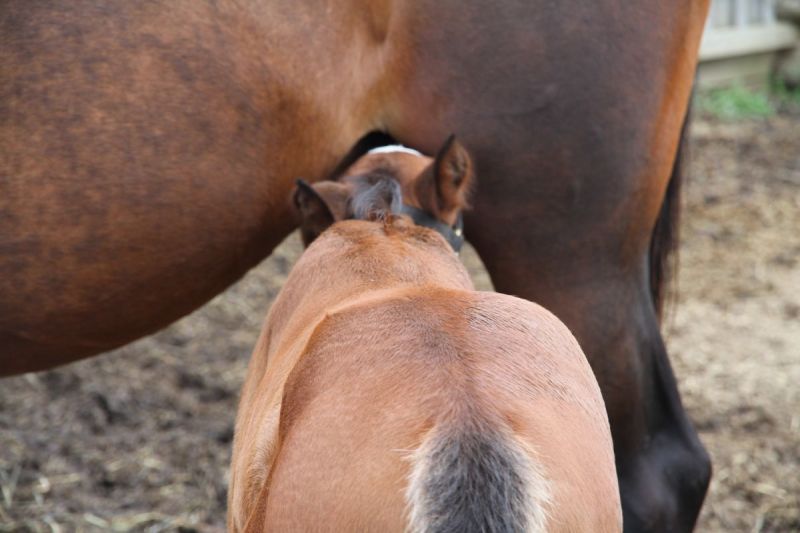
The amount of vitamin E fed to a pregnant mare will determine the levels the foal has access to in utero, and the levels of vitamin E subsequently available in colostrum and lactation. Since most manufactured supplements are formulated with the average horse in mind, the pregnant or lactating horse should be supplemented from other sources.
The same is true for breeding stallions, especially those that are both working and standing at stud. An intake of 1,000 to 2,000 IU and possibly higher depending on work and body weight would not be excessive for these horses.
Vitamin E requirements for growing horses have not been well established in the research literature, but NRC suggests a minimum of 80 IU/kg of dry matter. This means that a yearling at approximately 350 kg and eating two percent of his body weight in dry matter intake (seven kg of dry matter intake) will need approximately 560 IU (80 IU/kg of dry matter x 7 kg intake = 560 IU). I would suggest this should be a minimum for a growing horse as their rapid growth at this age sets the stage for increased metabolic activity and as a consequence, increased oxidative stress. Diets for the growing horse containing closer to 1,000 IU per day would not be excessive.
What about working horses?
The NRC Equine Guidelines suggest that mature horses engaged in hard work need a minimum of 1,000 to 1,800 IU of vitamin E per day as determined by body weight. As most commercial mineral supplements provide about half of that or less, and many of our working horses have limited if any access to fresh pasture, it raises the question of where our horses will get the balance of their requirement for this very important vitamin.
Most manufactured supplements for horses are formulated with the average horse in mind. This is a responsible decision on the part of the manufacturer considering that many nutrients can be toxic if overfed. However, it means that the owner of any horse, and in particular the working or pregnant or lactating horse, needs to consider supplementing vitamin E from other sources. Deficiencies of vitamin E in working horses have been related to increased incidence of injury and slower recovery times after hard work. It is suspected that the incidence of tying-up may be higher in horses that are deficient in vitamin E. Certainly for the horse that is on the road and in intensive competition, the enhanced immunity provided by adequate levels of vitamin E alone is a good reason to supplement.
Kentucky Equine Research (KER) in the USA is known for being at the forefront of equine research and they suggest the following intakes of vitamin E for horses:
- Daily intake for the mature 500 kg horses including pregnant mares – 1,000 to 2,000 IU
- Intake for the mature 500 kg horse in competition – 3,000 to 5,000 IU provided 6 to 12 hours prior to an event
KER also suggests that, as much as possible, a source of natural vitamin E (d-alpha-tocopherol) be included in the daily intake to ensure superior uptake in the digestive tract.
Related: Feeding the Broodmare: Eating for Two
Practical supplementation solutions
Vitamin E in all its forms is a very safe vitamin, but if you are considering supplementation in response to a particular issue in your horse, especially if it appears to be a neurological condition, you should consider consulting your veterinarian first. A blood test for serum alpha-tocopherol can give you a snapshot look at the vitamin E status of your horse. While blood results can be somewhat variable, and can help you establish a trend in his/her vitamin E status going forward.
If you are considering supplementing vitamin E at a higher level (in excess of 5,000 IU per day) it may also be helpful for you to consult with an equine nutritionist or your veterinarian to account for all the sources of vitamin E in your horse’s diet. While vitamin E is a very safe nutrient to supplement, it is never a good idea to feed excessive amounts of any nutrient but especially a fat soluble vitamin. You may also want to consider supplementing your horse with selenium at the same time, and again, for safe supplementation you must include all dietary sources in your calculations to ensure that you are not over-supplying it.
Consider sourcing natural vitamin E at your grocery store or local drug store. Often the vitamin E supplements, especially the “all natural” d-alpha-tocopherol capsules aimed at the human market, are very economically priced. Remember to assess ingredient statements to ensure that you are sourcing vitamin E in the form in which you want it.
Small meals fed often
Horses have relatively limited stomach and small intestine capacity. For this reason it is important to feed small meals often when providing nutrients that must be absorbed in the foregut. For the best utilization of vitamin E by your horse, the maxim for equine diets of “small meals fed often” is good advice. If your schedule will allow it, consider dividing your vitamin E supplementation into at least two meals per day, or more if it can be accommodated.
Remember that as a fat soluble vitamin, a supplemental level of vitamin E in your horse’s diet will not necessarily result in consistent increased levels of alpha-tocopherol at the muscle or blood level overnight. Your plan for supplementation needs a long term commitment. The outcome though, even for a pampered pasture pet, can result in many tangible benefits.
Related: Your Horse and B Vitamins
Related: The Beginner's Guide to the Equine Digestive System
Main photo: Fresh spring pasture is one of the most abundant sources of vitamin E. Photo: iStock/Emholk



